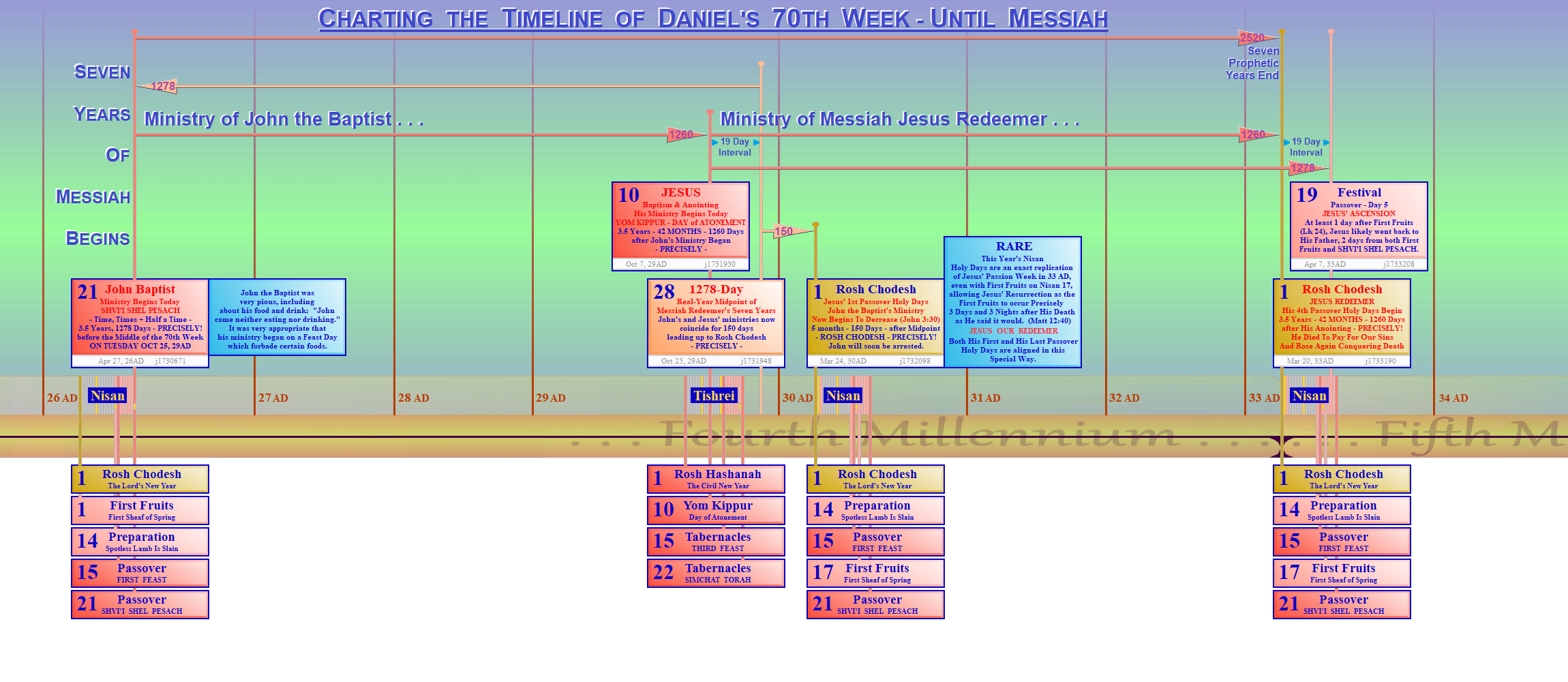Notes on Luke 24 regarding the timing of Jesus' Ascension to the Father
Jesus arose on the Day of First Fruits, Nisan 17, shortly before dawn:
1 But on the first day of the week, at early dawn, they came to the tomb bringing the spices which they had prepared. 2 And they found the stone rolled away from the tomb,
3 but when they entered, they did not find the body of the Lord Jesus.
Later that day:
13 And behold, on that very day two of them were going to a village named Emmaus, which was sixty stadia from Jerusalem.
- The precise distance of 60 stadia is uncertain, but this measurement is based upon the length of a Roman Stadium and is close to 600 feet.
- The distance the men walked was approximately 7 miles.
Evening initiates the next day, Nisan 18:
29 And so they strongly urged Him, saying, "Stay with us, for it is getting toward evening, and the day is now nearly over."
Walking the 7 miles back to Jerusalem, this is well into Nisan 18:
33 And they got up that very hour and returned to Jerusalem, and found the eleven gathered together and those who were with them,
Lengthy teaching well into the night of Nisan 18:
44 Now He said to them, "These are My words which I spoke to you while I was still with you, that all the things that are written about Me in the Law of Moses and the Prophets
and the Psalms must be fulfilled." 45 Then He opened their minds to understand the Scriptures, 46 and He said to them, "So it is written, that the Christ would suffer and rise
from the dead on the third day, 47 and that repentance for forgiveness of sins would be proclaimed in His name to all the nations, beginning from Jerusalem.
This is at least well into Nisan 18, and could certainly be the next day, Nisan 19:
50 And He led them out as far as Bethany, and He lifted up His hands and blessed them. 51 While He was blessing them, He parted from them and was carried up into heaven.
Luke's narrative certainly allows for a Nisan 19 ascension, but a strict reading yields Nisan 18. As previously stated, because Hebrew and Gregorian time periods don't perfectly overlap, there will be occasions where we must allow for what might appear to some as a one-day (or a one-year) apparent discrepancy, which is not actually a discrepancy at all.
Notes comparing the Timelines of Noah's Flood and Jesus Messiah's First-Advent Mission
- Noah's Flood began with 40 days of the tumult of deluge and earthquakes with aquatic upheavals. - Genesis 7:12
- Jesus' Ministry began with 40 days of the tumult of extreme physical deprivation along with Satan's wilderness temptation. - Luke 4:1-2
- After the 40 days and until 150 days, Noah's Flood experienced calm seas. - Genesis 8:1-2
- After Jesus' Temptation there were, together with John the Baptist, 150 days of calmness with an absence of governmental persecution.
- "... [A]t the end of 150 days the water [of Noah's Flood] decreased." - Genesis 8:3
- After 150 Days of a calm co-ministry with Jesus Messiah, John the Baptist declares, "He must increase, but I must decrease." - John 3:30
- After the ark came to rest, it was "... at the end of forty days, that Noah ... sent out a raven..." which didn't return. - Genesis 8:6-7
- "[Jesus] presented Himself alive after His suffering ... appearing to them over a period of forty days..." before His public and final ascension into heaven. - Acts 1:3




